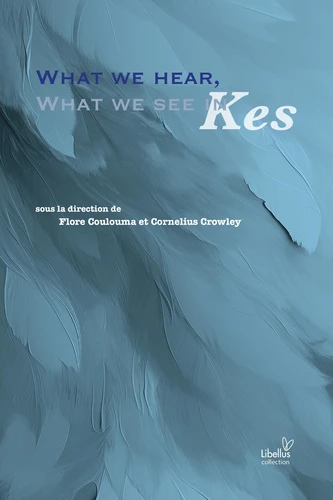What we hear, what we see in Kes
Par : ,Formats :
Disponible dans votre compte client Decitre ou Furet du Nord dès validation de votre commande. Le format Multi-format est :
- Pour les liseuses autres que Vivlio, vous devez utiliser le logiciel Adobe Digital Edition. Non compatible avec la lecture sur les liseuses Kindle, Remarkable et Sony
 , qui est-ce ?
, qui est-ce ?Notre partenaire de plateforme de lecture numérique où vous retrouverez l'ensemble de vos ebooks gratuitement
Pour en savoir plus sur nos ebooks, consultez notre aide en ligne ici
- FormatMulti-format
- ISBN978-2-84016-556-9
- EAN9782840165569
- Date de parution12/09/2024
- Protection num.NC
- Infos supplémentairesMulti-format incluant PDF avec W...
- ÉditeurPresses universitaires de Paris ...
Résumé
Ken Loach's film Kes (1969) is etched into a particular time, the late 1960s, not however the "swinging sixties" London. On screen here is a different place, farther north, a Yorkshire mining village, on the surface manifestly stable, ruled by the routine of habit and necessity, with little to suggest the imminence of the industrial action of the early seventies or the defeat and dislocation of the 1980s and after.
The following essays take in, from a variety of angles and approaches, what is shown and made audible in the film: a community of women, men, children, their lives woven into, both propped up and confined by, the institutional nexus of component places, home, workplace, school, public house, and component times, early morning, Friday night. What animates Ken Loach's picture of a mining community are the tensions evident in the sights and sounds through which the modest story of Billy Casper is conveyed, a story affording access to the lives of people as they play out, in occasional and sometimes irreversible conflict with other lives.
This collection of essays is part of the ongoing "Les Nords" project of the CREA, EA 370, on the interdependency between places and voices, and the social, cultural and linguistic geographies that enlighten the many guises of northern identities in the English-speaking world.
The following essays take in, from a variety of angles and approaches, what is shown and made audible in the film: a community of women, men, children, their lives woven into, both propped up and confined by, the institutional nexus of component places, home, workplace, school, public house, and component times, early morning, Friday night. What animates Ken Loach's picture of a mining community are the tensions evident in the sights and sounds through which the modest story of Billy Casper is conveyed, a story affording access to the lives of people as they play out, in occasional and sometimes irreversible conflict with other lives.
This collection of essays is part of the ongoing "Les Nords" project of the CREA, EA 370, on the interdependency between places and voices, and the social, cultural and linguistic geographies that enlighten the many guises of northern identities in the English-speaking world.
Ken Loach's film Kes (1969) is etched into a particular time, the late 1960s, not however the "swinging sixties" London. On screen here is a different place, farther north, a Yorkshire mining village, on the surface manifestly stable, ruled by the routine of habit and necessity, with little to suggest the imminence of the industrial action of the early seventies or the defeat and dislocation of the 1980s and after.
The following essays take in, from a variety of angles and approaches, what is shown and made audible in the film: a community of women, men, children, their lives woven into, both propped up and confined by, the institutional nexus of component places, home, workplace, school, public house, and component times, early morning, Friday night. What animates Ken Loach's picture of a mining community are the tensions evident in the sights and sounds through which the modest story of Billy Casper is conveyed, a story affording access to the lives of people as they play out, in occasional and sometimes irreversible conflict with other lives.
This collection of essays is part of the ongoing "Les Nords" project of the CREA, EA 370, on the interdependency between places and voices, and the social, cultural and linguistic geographies that enlighten the many guises of northern identities in the English-speaking world.
The following essays take in, from a variety of angles and approaches, what is shown and made audible in the film: a community of women, men, children, their lives woven into, both propped up and confined by, the institutional nexus of component places, home, workplace, school, public house, and component times, early morning, Friday night. What animates Ken Loach's picture of a mining community are the tensions evident in the sights and sounds through which the modest story of Billy Casper is conveyed, a story affording access to the lives of people as they play out, in occasional and sometimes irreversible conflict with other lives.
This collection of essays is part of the ongoing "Les Nords" project of the CREA, EA 370, on the interdependency between places and voices, and the social, cultural and linguistic geographies that enlighten the many guises of northern identities in the English-speaking world.





